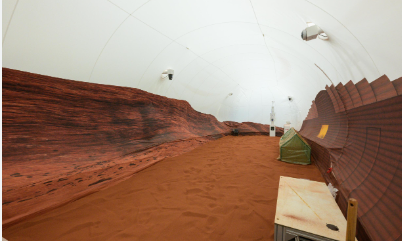NASA’s Mars Simulation Mission: Recent Updates
Four volunteers just finished an immersive Mars simulation at the Johnson Space Center in Houston as part of a new NASA project. While the mission officially finished on July 6, it was a big step toward getting ready for human missions to Mars.
Overview of the Mars Dune Alpha Habitat
The Mars exercise took place in the Mars Dune Alpha habitat, which was built using cutting-edge 3D printing technology. This habitat, which is part of NASA’s CHAPEA project (Cumulative Habitat for Extraterrestrial and Planetary Analysis and Exploration), feels like life on Mars, with problems like limited resources and slow contact. It’s 1,700 square feet and has different useful areas like a lounge, kitchen, and medical exam room that are meant to make it feel like a real home or workplace.
Mission Details and Daily Activities
The people who took part—Dr. Kelly Haston, Dr. Anca Selariu, Ross Brockewell, and Dr. Nathan Jones—did things that scientists would normally do on Mars. Some of these were pretending to be astronauts, fixing machines, and growing veggies. During their 378-day stay, they faced problems like being alone and having to wait up to 22 minutes for contact, which was like being on a real space mission.
Future Missions and Research Focus
The end of this year-long mission is not the end of the story. As part of the CHAPEA project, NASA hopes to send two more missions in 2025 and 2027. These missions will keep looking into and solving the problems that come with life on Mars. Steve Koerner, deputy director at Johnson Space Center, talked about how important nutrition is and how it affects performance. This was one of the main goals of the simulation to improve astronaut health and efficiency on future missions to Mars.
Implications and NASA’s Long-Term Goals
The detailed information and experiences gained from this mission will greatly influence how NASA plans to handle future manned trips to Mars, which are planned to happen in the 2030s. The project not only tests how strong people are physically and mentally, but it also moves NASA closer to its goal of leading the world in space travel.
Month: Current Affairs - July, 2024
Category: Science & Technology Current Affairs


